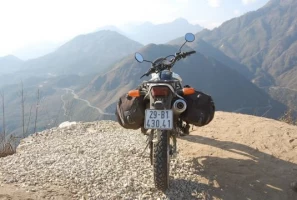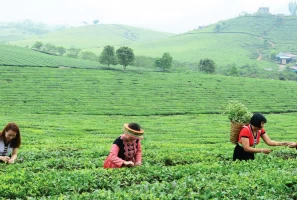Hue Imperial City, a symbol of the Nguyen Dynasty’s grandeur, captures the essence of Vietnam’s feudal legacy. As a UNESCO World Heritage site, it showcases the stunning architecture and historical depth of the ancient imperial capital. Discover the rich history and vibrant culture of Hue City with Frontier Travel Vietnam, where we’ll guide you through the essential experiences and hidden gems of this extraordinary destination.

1. Is Hue, Vietnam Worth Visiting?
Yes, it’s worth visiting Hue. Hue’s combination of historical depth, natural beauty, unique cuisine, and dynamic cultural activities makes it a destination that promises a rich and rewarding travel experience.
Location & Famous Historical Sites
Hue, situated in central Vietnam along the banks of the Perfume River, is a city steeped in history and cultural significance. As the former imperial capital of the Nguyen Dynasty, Hue boasts a wealth of historical landmarks, including the renowned Imperial City, a UNESCO World Heritage site. The city is also home to numerous royal tombs, such as the Tomb of Minh Mang and the Tomb of Khai Dinh, each offering a glimpse into the opulent lifestyles of Vietnam’s past emperors. These historical sites provide a captivating insight into the grandeur and legacy of Vietnam’s feudal era.
Wonderful Gifts of Nature
Hue is blessed with a stunning natural landscape that complements its rich historical heritage. The Perfume River, which flows serenely through the city, offers picturesque views and tranquil boat rides, especially during sunset. The surrounding countryside is dotted with lush green fields, rolling hills, and pristine beaches, making it an ideal destination for nature lovers. Nearby attractions such as Bach Ma National Park provide opportunities for hiking, wildlife spotting, and exploring the region’s diverse flora and fauna.
Unique Cuisine
Hue is renowned for its distinctive and flavorful cuisine, which reflects the city’s royal heritage and cultural diversity. The local food scene is vibrant and varied, offering dishes that are both visually appealing and delicious. Must-try specialties include Bún bò Huế (spicy beef noodle soup), Bánh bèo (steamed rice cakes), and Nem lụi (grilled pork skewers). The city’s street food markets and traditional restaurants offer a gastronomic adventure that delights the senses and provides a deeper understanding of Hue’s culinary traditions.
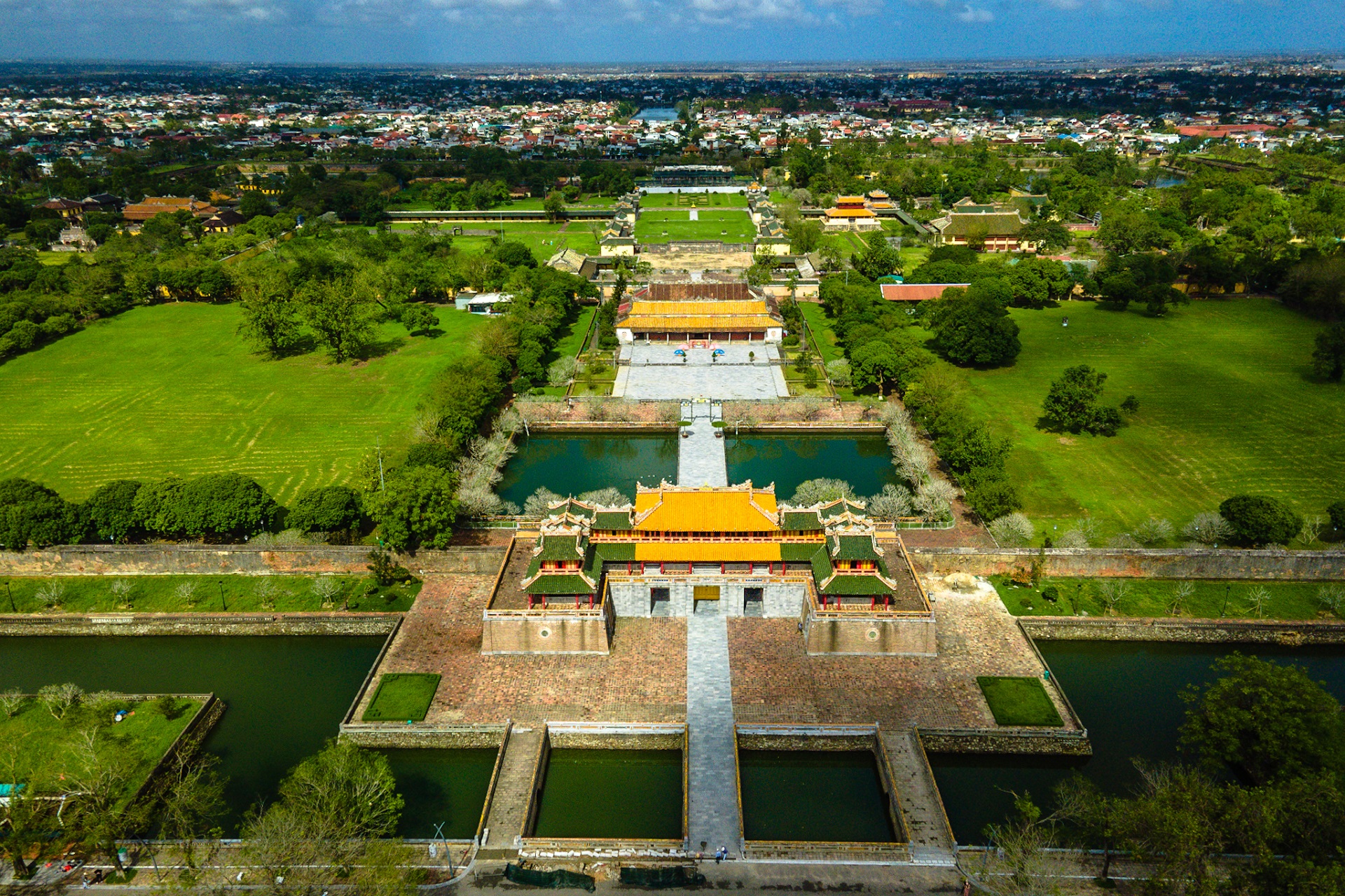
Exhilarating Cultural Activities
Hue is a cultural hub that hosts a variety of traditional and contemporary events throughout the year. The annual Hue Festival is a highlight, featuring performances, parades, and exhibitions that celebrate the city’s artistic and cultural heritage. Visitors can also enjoy traditional music performances, such as the Royal Court Music (Nhã nhạc), which has been recognized by UNESCO as an Intangible Cultural Heritage. Additionally, exploring the local markets, craft villages, and participating in traditional craft workshops offer hands-on experiences that enrich your understanding of Hue’s vibrant cultural scene.
2. What is the Weather Like in Hue, Vietnam?
Hue, located in central Vietnam, experiences a tropical monsoon climate characterized by high humidity and significant seasonal variations in temperature and rainfall. The weather can be broadly categorized into three main seasons: the hot and dry season, the rainy season, and the cool season.
Month | Average Temperature (°C) | Average Humidity (%) |
January | 19 - 23 | 88 |
February | 20 - 24 | 84 |
March | 22 - 26 | 82 |
April | 24 - 29 | 79 |
May | 25 - 31 | 75 |
June | 26 - 33 | 73 |
July | 26 - 34 | 76 |
August | 26 - 34 | 76 |
September | 25 - 31 | 80 |
October | 23 - 28 | 83 |
November | 22 - 26 | 87 |
December | 20 - 24 | 88 |
- Hot and Dry Season (April to August): During this period, Hue experiences high temperatures, often ranging from 24°C to 34°C. The humidity levels are relatively lower, especially in June and July, making it the hottest and driest part of the year. This season is ideal for beach activities and exploring the city’s outdoor attractions.
- Rainy Season (September to December): The rainy season brings cooler temperatures, averaging between 22°C and 28°C. This period sees the highest humidity levels and frequent heavy rainfall, particularly in October and November. While the rains can be intense, they often come in short bursts, leaving plenty of time to enjoy indoor activities and cultural sites.
- Cool Season (January to March): The cool season in Hue features milder temperatures, ranging from 19°C to 26°C. This season is marked by higher humidity but generally pleasant weather, making it comfortable for sightseeing and outdoor activities without the intense heat or heavy rains of the other seasons.
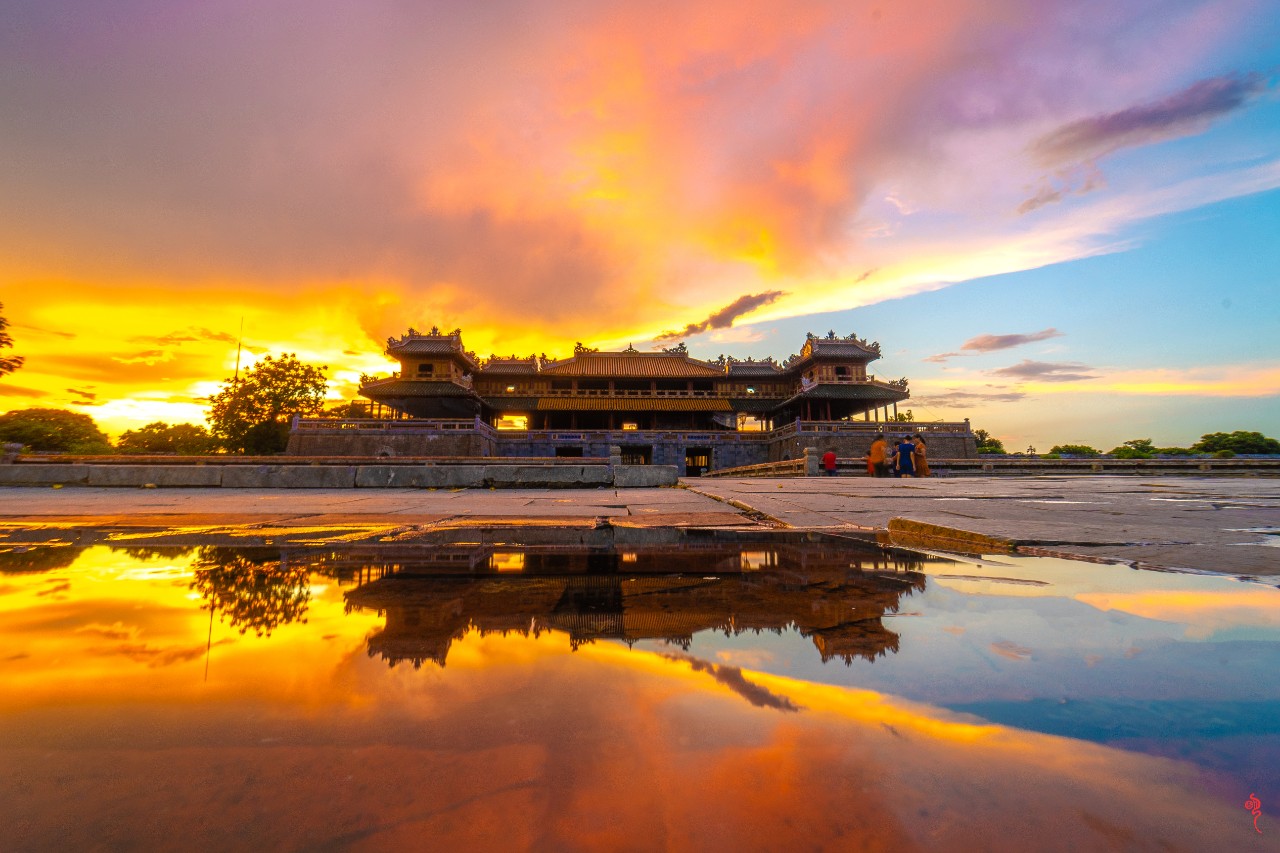
The ideal time to visit Hue is during the cool season from January to March. During these months, the weather is mild and pleasant, making it perfect for exploring the city’s historical sites, enjoying the natural scenery, and participating in outdoor activities. Additionally, the lower likelihood of rain during this period allows for uninterrupted travel plans and a more enjoyable experience overall.
3. What Things to Do and See in Hue, Vietnam?
Hue is a city brimming with historical landmarks, cultural sites, and natural beauty, offering a diverse range of attractions for visitors. From ancient imperial architecture to bustling local markets and tranquil natural settings, here are some of the must-see places and activities in Hue:
Imperial City (Citadel)
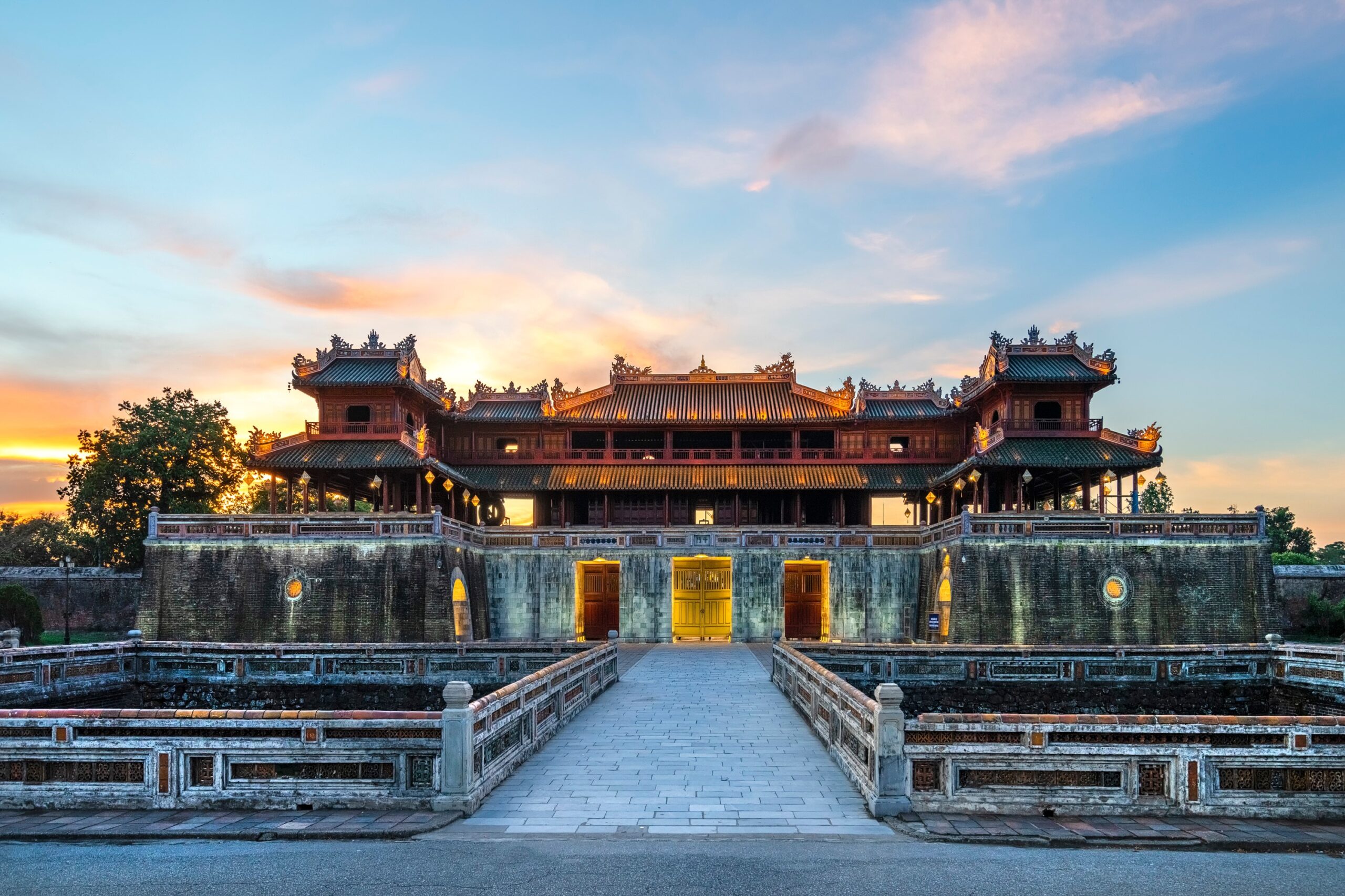
The Imperial City, also known as the Citadel, is Hue’s most iconic landmark and a UNESCO World Heritage site. Built in the early 19th century during the Nguyen Dynasty, it served as the political, cultural, and religious center of Vietnam until the mid-20th century. The Citadel is surrounded by a moat and thick stone walls, encompassing the Forbidden Purple City, royal palaces, temples, and gardens. Key features include the Noon Gate (Ngo Mon), Thai Hoa Palace (Hall of Supreme Harmony), and the To Mieu Temple Complex. The Citadel provides a fascinating glimpse into Vietnam’s royal history and architectural grandeur.
Thien Mu Pagoda
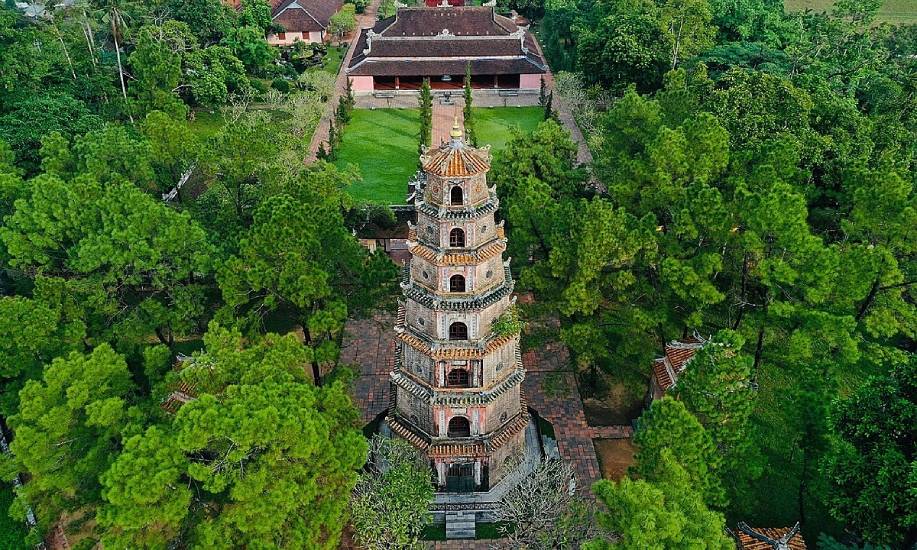
Thien Mu Pagoda, also known as the Pagoda of the Celestial Lady, is one of the oldest and most revered religious sites in Hue. Located on Ha Khe Hill overlooking the Perfume River, this seven-story pagoda dates back to 1601. It is a symbol of Hue and an important site for Buddhist worship. Visitors can explore its beautiful gardens, the iconic octagonal tower, and the temple complex, which houses historic relics and statues. The peaceful setting and spiritual ambiance make Thien Mu Pagoda a must-visit.
Tombs of the Emperors
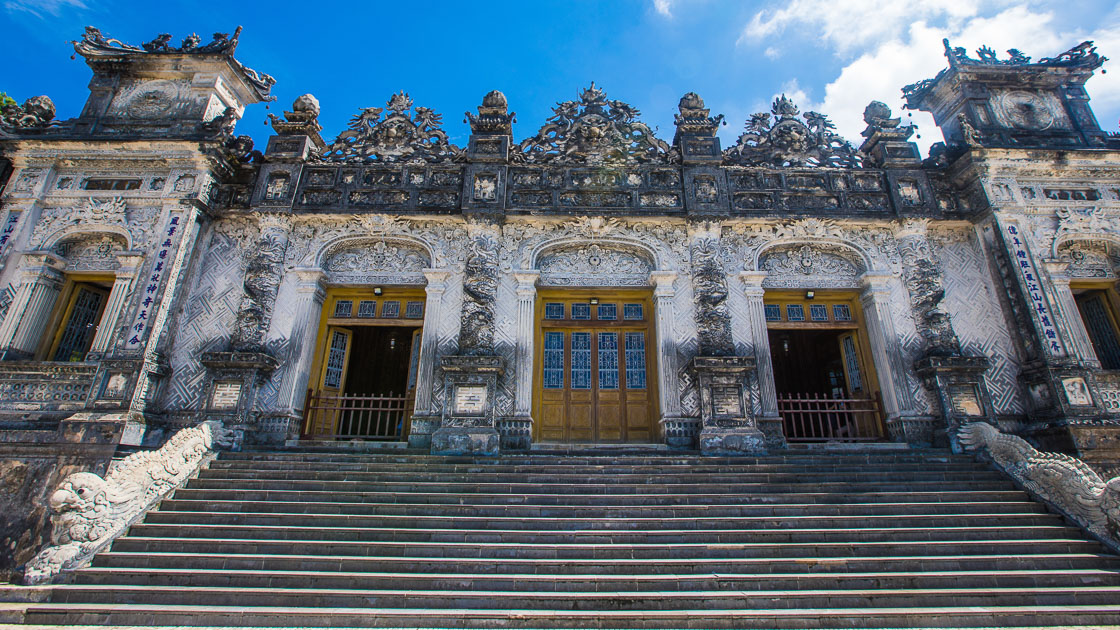
Hue is home to several magnificent imperial tombs built for the Nguyen Dynasty emperors. These tombs are architectural marvels, blending traditional Vietnamese and European styles. The most notable tombs include:
- Tomb of Minh Mang: Known for its serene setting and harmonious design, it features courtyards, pavilions, and a tranquil lake.
- Tomb of Khai Dinh: This tomb is unique for its elaborate decorations and a blend of Eastern and Western architectural elements. Its interior is adorned with intricate mosaics and colorful murals.
- Tomb of Tu Duc: Set amidst a lush pine forest, this tomb reflects the emperor’s romantic and artistic sensibilities, with elegant structures and landscaped gardens.
Perfume River (Huong River)

The Perfume River runs through the heart of Hue, providing a scenic backdrop to the city’s historic sites. Visitors can enjoy various activities on the river, such as:
- Boat Tours: Take a leisurely boat ride to explore Hue’s riverside attractions, including the Thien Mu Pagoda and the tombs of the emperors.
- Dragon Boat Cruises: Experience traditional music performances and local cuisine on a dragon boat cruise, especially enchanting during sunset.
- Cycling and Walking Along the River: Stroll or cycle along the riverbanks to take in the picturesque views and serene atmosphere.
Dong Ba Market
_12_7_2022_15_15_26_375_CH.jpg)
Dong Ba Market is the largest and oldest market in Hue, offering a vibrant shopping experience. Located near the Perfume River, this bustling market is a treasure trove of local goods, including fresh produce, traditional crafts, clothing, and souvenirs. It’s also a great place to sample local delicacies like Banh Beo (steamed rice cakes), Banh Khoai (crispy pancakes), and Che (sweet soup). The lively atmosphere and diverse offerings make Dong Ba Market a must-visit for experiencing Hue’s local culture.
Traditional Craft Villages

Hue is surrounded by several traditional craft villages, each specializing in unique artisanal products. Notable villages include:
- Thanh Tien Village: Famous for its handcrafted paper flowers, especially the traditional lotus flowers used in religious ceremonies.
- Phu Cam Village: Known for its conical hats (non la), which are meticulously crafted and often feature intricate designs.
- Tay Ho Village: Renowned for its bronze casting, producing exquisite statues, incense burners, and other decorative items.
Visiting these villages offers insight into the region’s rich craft heritage and the opportunity to purchase authentic handmade souvenirs.
Scenic Spots and Gardens
Hue is dotted with picturesque locations and peaceful retreats that showcase the natural beauty of the region. Some recommendations include:
- Bach Ma National Park: A haven for nature enthusiasts, offering hiking trails, waterfalls, and diverse wildlife.
- Tinh Tam Lake: A tranquil spot near the Imperial City, known for its lotus-filled waters and serene surroundings.
- Royal Gardens: Explore the beautifully landscaped gardens within the Citadel, such as the Co Ha Garden and the Truong Sanh Residence, which provide a peaceful escape amidst historical grandeur.
- Vong Canh Hill: Offers panoramic views of the Perfume River and the surrounding countryside, perfect for photography and relaxation.
4. What to Eat in Hue, Vietnam?
Hue’s cuisine is renowned for its distinctive flavors, vibrant colors, and meticulous presentation, reflecting the city’s royal heritage. Here are some must-try dishes that will give you a taste of Hue’s rich culinary traditions:
Banh Canh Nam Pho (Nam Pho Thick Noodle Soup)
Banh Canh Nam Pho is a traditional Hue dish that originated from Nam Pho Village. This thick noodle soup is made with chewy tapioca flour noodles and a flavorful broth, typically featuring a combination of pork and shrimp. The soup is thickened to a slightly viscous consistency, and it is often garnished with fresh herbs, green onions, and crispy shallots. The unique texture of the noodles and the savory broth make Banh Canh Nam Pho a delightful and comforting meal.
Bun Bo Hue (Spicy Beef Noodle Soup)
Bun Bo Hue is perhaps the most famous dish from Hue, known for its bold and spicy flavor. This hearty noodle soup features thick rice vermicelli, tender slices of beef, pork knuckles, and sometimes congealed pig’s blood. The broth is richly seasoned with lemongrass, chili, and shrimp paste, giving it a distinctive and aromatic taste. Bun Bo Hue is typically garnished with fresh herbs, lime wedges, bean sprouts, and banana blossoms.
Banh Beo (Steamed Rice Cakes)
Banh Beo are delicate steamed rice cakes served in small, shallow dishes. These bite-sized treats are topped with a mixture of savory ingredients, including dried shrimp, mung bean paste, crispy fried shallots, and scallion oil. They are usually served with a side of nuoc cham (Vietnamese dipping sauce) for added flavor. Banh Beo is a popular snack in Hue, offering a delightful combination of textures and tastes.
Nem Lui (Grilled Pork Skewers)
Nem Lui is a beloved Hue specialty consisting of grilled pork skewers served with rice paper, fresh herbs, and a variety of vegetables. The pork is marinated with lemongrass, garlic, and spices before being grilled to perfection. To enjoy Nem Lui, diners wrap the grilled pork in rice paper along with herbs, lettuce, cucumber, and other fresh ingredients, then dip the rolls in a special peanut sauce. This dish is both flavorful and interactive, making it a fun dining experience.
Com Hen (Baby Clam Rice)
Com Hen is a unique and flavorful dish made with baby clams, rice, and an array of herbs and spices. The clams are stir-fried with garlic, chili, and fish sauce, then served over steamed rice. The dish is garnished with fresh herbs, crispy pork rinds, roasted peanuts, and fried shallots. Com Hen is known for its complex combination of flavors and textures, offering a taste of Hue’s culinary ingenuity.
Che Hue (Hue Sweet Soup)
Che Hue refers to a variety of sweet soups and desserts that are popular in Hue. These sweet treats often include ingredients such as beans, fruit, tapioca pearls, and coconut milk. Each type of Che has its unique flavor and texture, ranging from creamy and rich to light and refreshing. Che Hue is a perfect way to end a meal or enjoy as a refreshing snack on a hot day.
Banh Khoai (Hue Pancakes)
Banh Khoai is a crispy Vietnamese pancake that resembles the more widely known Banh Xeo, but with some differences unique to Hue. These pancakes are made from rice flour batter, fried until crispy, and filled with a mixture of shrimp, pork, and bean sprouts. Banh Khoai is served with fresh herbs, lettuce, and a special dipping sauce made from fermented soybeans, adding a distinctive flavor to the dish.

5. FAQ about Hue, Vietnam
How to Get to Hue, Vietnam?
Since Hue has an accessible location in the center of Vietnam, it is easy to travel to Hue from Ho Chi Minh City (1100 kilometers to the south), Hanoi (700 kilometers to the north), or the nearby Da Nang City (about 100 kilometers away) by the following means of transportation:
- Airplane: There are regular domestic flights from Ho Chi Minh City or Hanoi to Hue’s Phu Bai Airport (HUI). Then, you can catch a taxi from Phu Bai Airport to reach Hue City center (about 15 kilometers away).
- Train: Hue is an express stop on the main north-south railway line that connects Hanoi and Ho Chi Minh City. It would be an unforgettable journey to Hue when you pass the spectacular scenery on overnight trains with air-conditioned compartments, soft seats, and comfortable sleeping beds at reasonable prices.
- Bus: A tour bus is the longest but cheapest way to get to Hue from Da Nang (2.5 hours), Hanoi (13 hours), or Ho Chi Minh City (25 hours). Buses will arrive at the two hub bus stations of Hue City: the Northern Bus Station and the Southern Bus Station. You can make online bookings through private agents in the town.
- Car/motorbike: From Da Nang City, you can take a 3-hour ride to Hue by following the coastal road of National Highway 1, which passes through the scenic Hai Van Pass (Hai Van Quan).
Where to Stay in Hue, Vietnam?
Hue offers a variety of accommodations to suit every budget and preference, ensuring travelers find the perfect place to stay.
- For budget-conscious travelers, Hue Backpackers Hostel and Why Not Hostel are excellent choices. Both hostels offer dormitory and private rooms, free Wi-Fi, and social events, all at affordable prices. They are centrally located, making it easy to explore the city.
- For mid-range accommodations, consider Moonlight Hotel Hue and Hue Serene Palace Hotel. Moonlight Hotel features a rooftop pool, fitness center, and complimentary breakfast, while Hue Serene Palace Hotel offers elegant rooms, excellent service, and an on-site restaurant.
- Luxury travelers will enjoy Azerai La Residence, Hue, Pilgrimage Village Boutique Resort & Spa, and Indochine Palace. Azerai La Residence offers a spa, fine dining, and stunning river views. Pilgrimage Village provides a tranquil retreat with multiple swimming pools and a spa. Indochine Palace features spacious rooms, a fitness center, and luxurious amenities.
Hue, Vietnam, is a must-visit destination rich in history, culture, and natural beauty. From the iconic Imperial City and Thien Mu Pagoda to its vibrant cuisine and scenic Perfume River, Hue offers an unforgettable experience. With easy access and a range of accommodations, exploring Hue is convenient and rewarding. Discover the best of Hue with Frontier Travel Vietnam and make your visit truly memorable.





